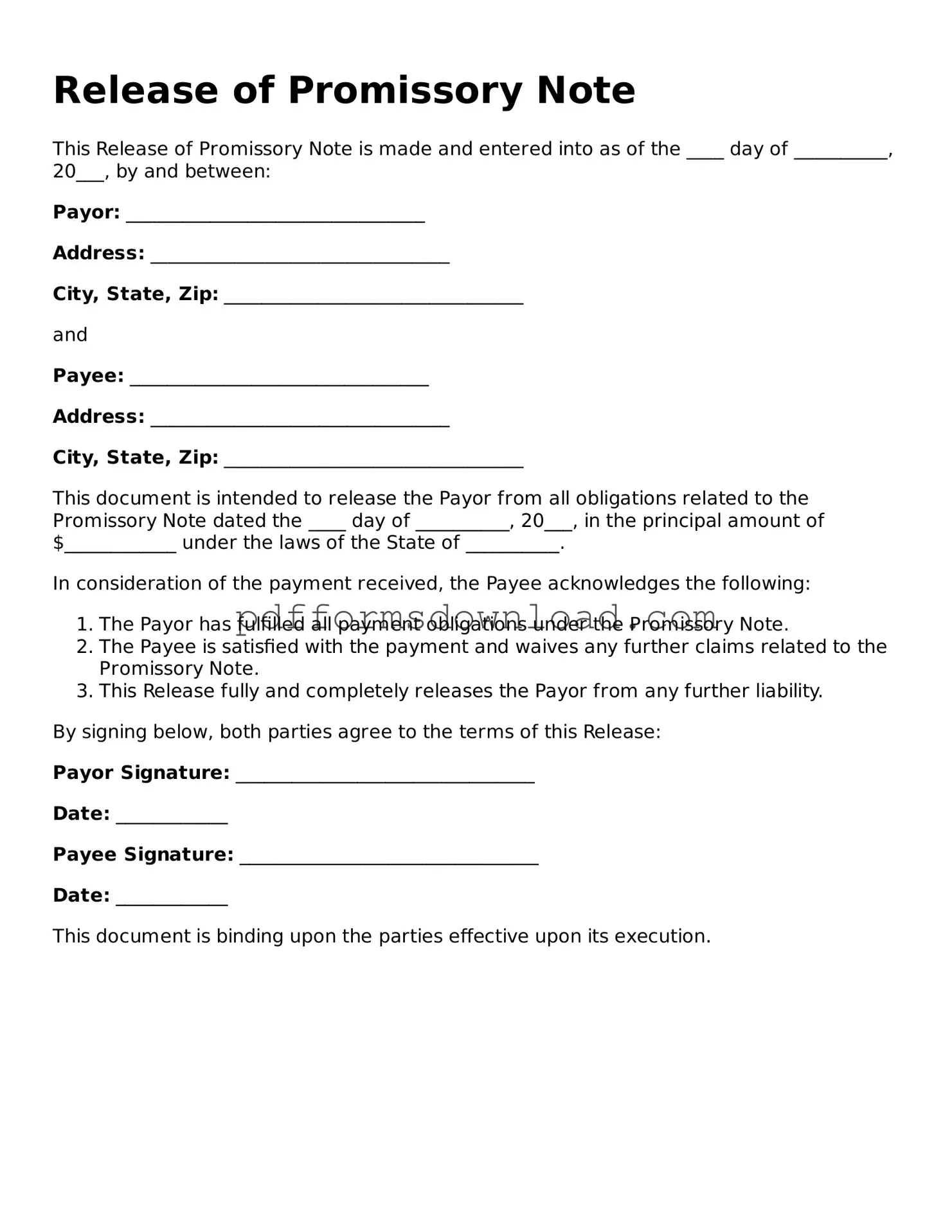What is a Release of Promissory Note form?
The Release of Promissory Note form is a document that formally indicates the cancellation or satisfaction of a promissory note. When a borrower repays the amount owed under the note, this form serves to release them from any further obligations. It provides legal proof that the debt has been settled and that the lender relinquishes any claims against the borrower regarding that specific note.
Who needs to complete the Release of Promissory Note form?
Both the lender and the borrower should complete the Release of Promissory Note form. The borrower needs to ensure that they receive confirmation of the debt's satisfaction, while the lender must provide this acknowledgment to formally document the release of the obligation. This mutual agreement protects both parties and clarifies that the debt has been fully paid.
When should the Release of Promissory Note form be submitted?
The form should be submitted immediately after the borrower has fulfilled all payment obligations outlined in the promissory note. Timely submission helps avoid any confusion or disputes regarding the status of the debt. It is advisable to keep a copy of the completed form for personal records, as it may be needed for future reference or in case of any disputes.
What information is typically required on the form?
The Release of Promissory Note form generally requires essential information such as the names of the borrower and lender, the date of the original promissory note, the amount of the debt, and the date of payment. Additionally, both parties should sign and date the form to validate the release. This information ensures clarity and completeness, making it easier to reference in the future.
Is the Release of Promissory Note form legally binding?
Yes, once both parties have signed the Release of Promissory Note form, it becomes a legally binding document. This means that it can be enforced in a court of law if necessary. By signing the form, the lender acknowledges that the debt has been paid in full, and the borrower is released from any further obligations related to that specific promissory note.
